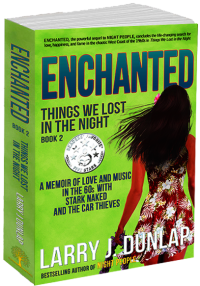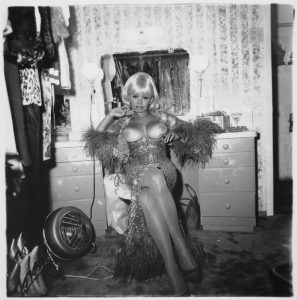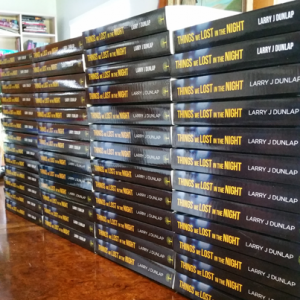Enchanted, audio prologue
Read by Acapella Sharon22 in Text loud




Diane Arbus’ photo of Carol Doda
The topless craze in North Beach that rocked San Francisco during the 60s began with the legendary Carol Doda. She was an amazing character and a true San Franciscan. She died Wednesday, November 11, 2015. She was 78 and I’m sorry to be just finding that out and writing about her now. I didn’t know her but by all accounts she was well-liked and in her later years had her own clothing store. She was a Californian icon and I hate to see them pass. We worked in a topless club, the Galaxie, just across the street from the Condor Club, for most of 1966 with our own covey of topless dancers, singers, and showgirls, who befriended us and helped acclimate us to working on Broadway in the City. We were still fresh from Indiana after slaving away in the dive bars across the Bay, and it took some getting used to. It was one of my favorite years….
This short video is from the Channel 7 ABC News in San Francisco.
 House of Many Gods: A Novel by Kiana Davenport
House of Many Gods: A Novel by Kiana Davenport
My rating: 5 of 5 stars
Kiana Davenport’s book House of Many Gods is a wonderful generational novel, beginning in the mid-Sixties and running to present day, along the Waianae coast of Oahu, a neighborhood largely unknown to the outside world. It houses the third-largest homeless population in the United States, made up of mostly ghettoized native Hawaiians. In this novel, set in a house shared by many and various mothers, their children and the occasional father, a story about a young girl takes place. Abandoned by her mother, she struggles within a culture clash within the only home she’s ever known, her expectations, the outside world, and how to love. During the book she finds a way through much of the tragedy and poverty around her to become a doctor, eventually connect the pieces of her life, and travels halfway around the world to rescue a man, also struggling in his native culture, that she’d refused to love. At least as important as the story she tells, Kiana’s descriptions and narrative, as lush and rich as a tropical rainforest, brings along the deep abiding spiritualism of a Hawaiian spirit subjugated by a profusion of foreign influences, from the missionaries to the more recent intrusions of Asian, and most of all, the United States, influences. It’s as if Kaui Hart Hemmings (The Descendants) meets Gregory David Roberts (Shantaram) in Hawai’i. I rank Kiana Davenport alongside my favorite, and most influential authors, Hemmings, Donna Tart, Marisa Pessl, and Dennis Lehane. This will be a read you cannot put down and will never forget.
As a side note, Kiana’s books about Hawai’i, especially this one, have influenced my new book, Enchanted. This review about a year and a half ago, and I feel as strongly about this book now as I did then.
74 seems to be a fatal number. So many greats falling by the wayside at this milepost. Since it’s my number, can’t help but wonder, but I don’t think it’s my time yet. I’ve still got things to say … Read this fascinating article about Paul Kantner and Signe Toly Anderson, Airplane’s first girl vocalist. She was 74, too
It was sad enough that Jefferson Airplane founding member Paul Kantner, the keeper of the famed San Francisco band’s flame throughout its turbulent half-century, died last week, from heart failure. A deeper melancholy set in with news of the death the same day of the Airplane’s first female vocalist, Signe Toly Anderson, from cancer. Both were 74.

A look back at the festivals of the ’60s whose influence can still be felt in the music and festivals of today. Source: Summer of Love: The History of San Francisco Music in the ’60s and its Influence Today
A look back at the festivals of the ’60s whose influence can still be felt in the music and festivals of today.
The year was 1967 and the place was San Francisco. It was the Summer of Love; a season of creative expression, free society, cultural revolution and arguably the beginning of what we now enjoy as modern music festivals.
I hit the road for Outside Lands this week and I can’t help but reflect (or slightly obsess) over the rich musical history that once graced the Bay Area. It was a time like no other — it was pure, quick-moving, and psychedelic — the Summer of Love irreversibly changed our culture forever. I grew up in Northern California, an hour outside of San Francisco, with my dad’s vinyl collection on continual rotation. The likes of David Crosby, the Doors, and the Who were constant companions of mine and I was captivated by an early age. I was in. But, alas, two decades too late… so this year I wanted to make a point to research this beautiful history and experience “today’s” San Francisco music festival with this knowledge in my back pocket. To feel the energy of the past, to respect the history and the people who pushed an artistic and creative generation forward.
Aug 04, 2015
This is a review of NIGHT PEOPLE, Book 1 – Things We Lost in the Night, A Memoir of Love and Music in the 60s with Stark Naked and the Car Thieves from Readers’ Review. Thank you, Mamta!
Reviewed By Mamta Madhavan for Readers’ Favorite
Things We Lost in the Night: A Memoir of Love and Music in the 60s with Stark Naked and the Car Thieves by Larry J. Dunlap is an honest memoir in which the author has carefully depicted his years as a young and struggling musician, along with his friends as they strive for fame and fortune. The book also captures the essence of the 1960s when there was a cultural and musical shift. Their transformation from a small band to that of a famous one and their successes change Larry’s perspective on a lot of things in life. In a nutshell, the memoir exposes the 1960s, the music industry, vocal groups, R&B cover bands, Las Vegas, San Francisco, Hollywood recording studios, the nightlife, and the sexual revolution that happened during that period.
The memoir connects with readers intimately as the author shares every small detail of his life. Readers are taken into the author’s world of music, the problems they face as a band, and their struggle for survival initially. The rise of the band opens the way for many other things, and the author also speaks about the sacrifices they make on their way to the top. Many moments in the author’s life are poignantly mingled with misery, happiness, music and sex. I found the book interesting as it speaks about music, the band, recordings and many other things related with music. The challenges the author faces in his life and his love life and other casualties make this memoir a very exciting read.
 FRIENDS AND FAMILY PRE-ORDER SALE FOR KINDLE BOOK – $2.99
FRIENDS AND FAMILY PRE-ORDER SALE FOR KINDLE BOOK – $2.99It’s almost here! NIGHT PEOPLE, Book 1 – Things We Lost in the Night, A Memoir of Love and Music in the 60s with Stark Naked and the Car Thieves, goes public on June 15th. The print paperback will go allegedly go on sale at the same time, though we’ll see how accurate that is.
I’ve still got some free ARC books for anyone who would like to get one from me. Just let me know. I’ve got them ’til they’re gone.
In other news …
FOREWARD REVIEWS will feature NIGHT PEOPLE in it’s Fall catalog under the Biography/Memoir section along with 7 other books.We’ll also be mentioned in the AbFab section but the big news is being in the major part of the catalog. This catalog is racked at a majority of the Barnes & Nobles, something 11,00 libraries and several other places, plus the book will be shown at the American Library Association Exhibition in San Francisco later this month.
I’ve received 7 Goodreads reviews for NIGHT PEOPLE, and hope there will be more so we can open up on Amazon with a splash.
 “She’s Beautiful When She’s Angry” Mary Dore’s documentary of The Women’s Movement
“She’s Beautiful When She’s Angry” Mary Dore’s documentary of The Women’s MovementI’ve always contended that the Pill was one of the main contributors to many if not all of the upheavals of the 60s, not just the women’s movement that got started then. When Margaret Sanger, who felt that women should be allowed to pursue sex with the same sense of abandon as men, combined with Dr. Gregory Pincus, a biologist expert in mammalian birth, combined to create a birth control pill as easy to take as an aspirin, it changed the game entirely. Many women recognized the power of being able to change their reproductive cycle from random chance to a matter of choice, and all the ways they could exert it on the world around them, especially socially. In the 60s, before the scourge of HIV and the lack of incurable, and possible life-threatening sexually-transmitted disease, this change introduced what was considered in many places a scandalous return to the sexual freedoms of the Garden of Eden, pre-fall.
As young men from the Midwest, we began to notice this new attitude when we were hired to work for a year doing shows at a ritzy topless night club in San Francisco’s North Beach, original home of the West Coast beatniks. Women were the instigators now. The saying “men proposed, women depose” wasn’t always true. The girls could also propose and decide the outcome of sexual encounters. Females taking off their tops in San Francisco was no longer hidden in sleazy strip clubs populated by lonely men in raincoats, but featured in the heart of the City’s nightlife. Audiences were filled with ‘date night’ couples, men in suits and women arrayed in top couture come to view the Topless Insurgency.
Four miles south of us in Haight Ashbury, the Peace and Love movement flourished, however it seems obvious to me that ‘free love’ would have drowned itself in a sea of offspring if the ability of the girls and women there had been unable control pregnancy. Much of that movement was driven by the ethos of women, that love could conquer all, who wouldn’t have been able to take that leadership role if not able to postpone childbearing.
However, as the author of this article, points out, it wasn’t all romance either.
“March is Women’s History Month and Mary Dore’s documentary She’s Beautiful When She’s Angry helps us celebrate, remember, and cheer one of our most vilified sheroes of the last century, The Women’s Movement.Zooming in on the years 1966 to 1971, Dore excavated the archival images of the birth of the movement. She captures the spirit, soul and fire of these fiercely courageous, brilliant and badass feminists who were fighting for the very same issues we fight for today – our right to control our bodies, and our struggle for freedom and equality. We stand on the shoulders of these mighty warriors.
And who said feminists aren’t any fun? Dore documents the hilarity, excitement, outright boldness and scandalous moments of the movement.”
– See more at: http://www.gaystarnews.com/article/discover-bold-brilliant-badass-feminists-60s060315#sthash.mSRFc4l9.dpuf
 Hi, I’m Larry J. Dunlap, and I’m introducing my memoir BAND, memoir of A Naked Car Thief. I’ve been writing since the late seventies when I was in the business side of music. I did artist reviews and a cartoon strip for local music magazines then. Wrote my first story, a science fiction tale about built around a play-by-mail space empire game I was addicted to about then, too. I began professional technical writing after I’d gotten involved in technical training, eventually writing for Fortune 100 companies on contract. In recent years as the press of professional life lessened, I have returned to something I knew I’d have to do before embarking on any other authorial projects, a remembrance of my transition from a young Midwestern man/boy dreamer to a creator’s life in the warm California sunshine via a mid-sixties rock band. An excerpt from this memoir was published in an Inlandia Institute anthology last November.
Hi, I’m Larry J. Dunlap, and I’m introducing my memoir BAND, memoir of A Naked Car Thief. I’ve been writing since the late seventies when I was in the business side of music. I did artist reviews and a cartoon strip for local music magazines then. Wrote my first story, a science fiction tale about built around a play-by-mail space empire game I was addicted to about then, too. I began professional technical writing after I’d gotten involved in technical training, eventually writing for Fortune 100 companies on contract. In recent years as the press of professional life lessened, I have returned to something I knew I’d have to do before embarking on any other authorial projects, a remembrance of my transition from a young Midwestern man/boy dreamer to a creator’s life in the warm California sunshine via a mid-sixties rock band. An excerpt from this memoir was published in an Inlandia Institute anthology last November.
I’ve always known it was likely I’d be a writer since I have been such an inveterate and addicted reader. For many reasons, I never attempted to write for a wide audience until relatively recently. During the six plus years I was leader of the rock band that grew out of my homespun vocal group in Indianapolis, I formed incredible bonds with my band mates. When we gathered to reminisce, we’d always remind ourselves of the interesting adventures we’d survived. I was always prompted by the guys saying, “Man, you have got to write a book about this.” As the years went by I heard from several of them saying that it was hard to talk about what we’d accomplished because no one could relate to their memories. When I could finally devote myself to this project I wanted to rectify that impression. I realized that vignettes, told out of context, sound like either bragging or disconnection. Telling our story would put it all in context. However, with our fading and differing memories there was only one way to do that, as a personal memoir. The more I settled into the project the more I realized I’d come to the right conclusion. I needed to write about my story, how I felt, what it meant to me, and let the rest of it shine through as I remembered and retold it.
My memoir starts on New Year’s Eve of 1964, though  chapter one covers a dangerous and violent night relating to the near hit record our vocal group in Indianapolis almost accidentally had in our nearby big city, Chicago. As a husband of two wonderful little boys and my high school sweetheart wife I loved, I was struggling with finding my creative place in the world. The environment around us in the structured world we grew up in and the hard line taken by our parents finally blew up when the group and I tried to turn ourselves into a working band. Though the first incarnation failed, a miraculous event sealed my fate and I was off to California to join my old buddies in a desperate attempt to create a rock band within a week in the seething musical chaos of San Francisco’s east bay dive bars. At the cost of the wrenching destruction of my family, the journey began that would carry us into adventure after adventure, to the top of San Francisco’s night life, through Hollywood, famous personal managers and record producers, to the heights of Las Vegas’ rock scene and the top of the largest Vegas resorts. A side trip to the Hawaiian islands found us performing for American warriors on R&R during the height of the Vietnam war, where I met a Hawaiian girl who touched me as deeply as my first love. As our status as performing stars rose, though we struggled with recording success, I was certain I’d reached the pinnacle of happiness and success. But there were undercurrents beyond my control that would bring me to the edge of sanity and the end of the music. Somehow I’d have to save my band, hope to save my new family, and try not to lose myself.
chapter one covers a dangerous and violent night relating to the near hit record our vocal group in Indianapolis almost accidentally had in our nearby big city, Chicago. As a husband of two wonderful little boys and my high school sweetheart wife I loved, I was struggling with finding my creative place in the world. The environment around us in the structured world we grew up in and the hard line taken by our parents finally blew up when the group and I tried to turn ourselves into a working band. Though the first incarnation failed, a miraculous event sealed my fate and I was off to California to join my old buddies in a desperate attempt to create a rock band within a week in the seething musical chaos of San Francisco’s east bay dive bars. At the cost of the wrenching destruction of my family, the journey began that would carry us into adventure after adventure, to the top of San Francisco’s night life, through Hollywood, famous personal managers and record producers, to the heights of Las Vegas’ rock scene and the top of the largest Vegas resorts. A side trip to the Hawaiian islands found us performing for American warriors on R&R during the height of the Vietnam war, where I met a Hawaiian girl who touched me as deeply as my first love. As our status as performing stars rose, though we struggled with recording success, I was certain I’d reached the pinnacle of happiness and success. But there were undercurrents beyond my control that would bring me to the edge of sanity and the end of the music. Somehow I’d have to save my band, hope to save my new family, and try not to lose myself.
I’m currently working my way through the second edit. Memoir is a special form that I’ve come to really appreciate; I learned a lot from Wild, by Cheryl Strayed, and Candy Girl, by Diablo Cody, and read many, many others as I prepped for, and continue to write. I’ve adopted a narrative style including dialog to my memoir because that’s how I remember it even though it was so long ago. We moved through a time of great historical and cultural change the background behind the events of the story; there is no need to embellish the dramatic arc at all, it just is what it was. I hope other memoirists see their story as vividly as I see mine. I’m looking forward to finding more examples of this style to continue to inspire me.
Unfortunately, most memoir readers and many memoir authors see them as tearjerkers, while there’s certainly a low point in my story, so low that it feels more like black humor to me, I’m not looking for sympathy or redemption. Personally, I hate saccharine sweet stories. In my eyes I’m just trying to recount what I think of as a great adventure that I was lucky enough to be a part of, and survive — without judgment. To do this requires honing the skills and dramatic arts of authors of fiction. I hope from the Memoir’s Discussion Group on LinkedIn to be influenced by others who approach their life adventures in this way, and to be a source of influence to others in the style I’ve chosen.